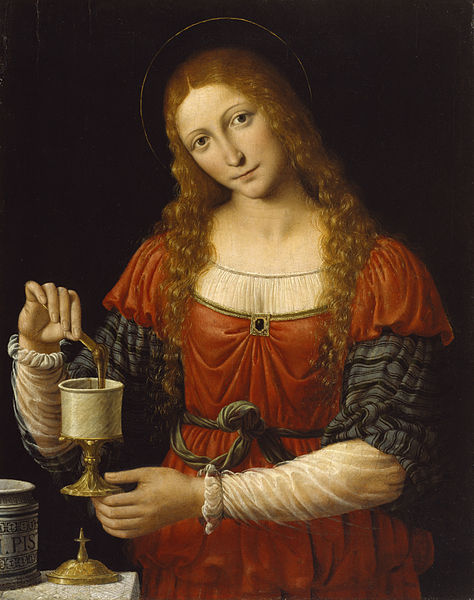Summary | Excerpt | Reviews | Beyond the Book | Read-Alikes | Genres & Themes | Author Bio

This article relates to The House Is on Fire
 In The House Is on Fire by Rachel Beanland, the character Sally grows increasingly disgusted by the way men's actions on the night of the 1811 Richmond theater fire are glorified in the local media, while women's experiences go completely unnoticed.
In The House Is on Fire by Rachel Beanland, the character Sally grows increasingly disgusted by the way men's actions on the night of the 1811 Richmond theater fire are glorified in the local media, while women's experiences go completely unnoticed.
As far back as Biblical times, women in much of the world have been underrepresented and misrepresented in various types of media, and therefore historical records. Think of Mary Magdalene—a woman who, according to one gospel account, was a companion of Jesus and one of the first people to learn of the Resurrection. Early Church leaders rewrote her story, conflating her with an unnamed woman from the Gospel of Luke and depicting her as a sinner who washed Jesus' feet with her tears. This version of Mary Magdalene as a prostitute remains alive and well to this day. The History Channel notes that this recasting ensured that an influential woman would be dismissed, her importance downplayed.
In modern times, this dynamic plays out through underrepresentation and gender stereotypes in news coverage. Media Smarts, a Canadian not-for-profit focused on encouraging critical thinking skills through digital and media literacy, cites a 2015 report that found that around the world, women represent only 24% of people interviewed or featured in stories in newspapers and on television and radio news programs. And only 19% of experts quoted in the news are women. Another study found that in 2017, only 37% of bylines in news stories belonged to women. When it comes to sports reporting, Media Smarts notes that 96% of coverage is allocated to men. Women play 40% of the sports but get just four percent of the coverage. Commentary for women athletes often mentions parenthood or a romantic partner ahead of athletic prowess—a totally different paradigm than that used for men.
A review of U.S. newspaper portrayals of women from 1900-1960, undertaken by Western Kentucky University student Laurel Wilson as a capstone project in 2011, gives a sense of how American news coverage of women has changed (and retained certain features) over time. Wilson found that while coverage of women did evolve over the specified period, it remained largely focused on domestic questions. In 1900, women made up 20% of the workforce; in 1910 60% of high school diplomas were awarded to women. Yet contemporaneous coverage of women centered on homemaking, cooking and fashion. During World War I, women worked in factories building munitions, automobiles and airplane parts, but because these jobs were held by blue-collar women, their contributions were overlooked in favor of stories about women with higher socioeconomic statuses serving as nurses or volunteers—more "traditional" female roles.
To this day, inequalities remain. An October 2015 article in the American Sociological Review argues that there are broad social, economic and cultural reasons for the underrepresentation of women in the media. It concludes that the majority of news reporting focuses on the upper echelons of occupational and social power—positions that have historically been dominated by men, and to an extent remain so.
Why does representation in the news matter? For one thing, underrepresentation and stereotyping limit opportunity. The American Sociological Review paper notes that media attention increases campaign donations and votes for featured political candidates. It leads to higher salaries for actors and authors. Charitable or social causes featured in the media receive more donations and are more likely to result in systemic change. So if women and women's issues receive less coverage, they are hamstrung by forces beyond their control. Adding other factors into the equation, like race, complicates the effect.
At a more fundamental level, representation matters because today's news is tomorrow's history. Contemporary arguments that we cannot "change history" miss the mark because they fail to recognize that history was skewed by the omission of entire demographics from the public record in the first place. The underrepresentation of women leads to a set of cultural expectations that make the over-representation of men seem "normal," adding yet one more barrier to women's ability to reach true parity with men.
Oil painting depicting Mary Magdalene, attributed to Bernardino Luini and Andrea Solario (c. 1524), via The Walters Art Museum
Filed under Society and Politics
![]() This "beyond the book article" relates to The House Is on Fire. It originally ran in April 2023 and has been updated for the
April 2024 paperback edition.
Go to magazine.
This "beyond the book article" relates to The House Is on Fire. It originally ran in April 2023 and has been updated for the
April 2024 paperback edition.
Go to magazine.
Some books are to be tasted, others to be swallowed, and some to be chewed on and digested.
Click Here to find out who said this, as well as discovering other famous literary quotes!
Your guide toexceptional books
BookBrowse seeks out and recommends the best in contemporary fiction and nonfiction—books that not only engage and entertain but also deepen our understanding of ourselves and the world around us.